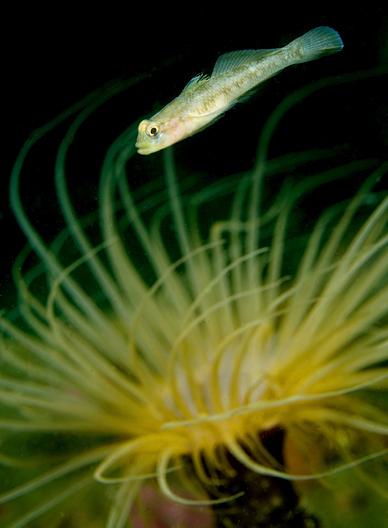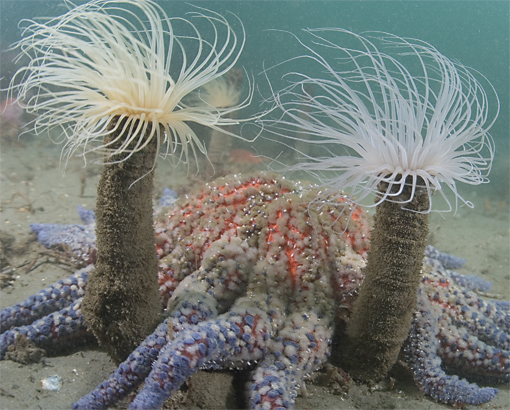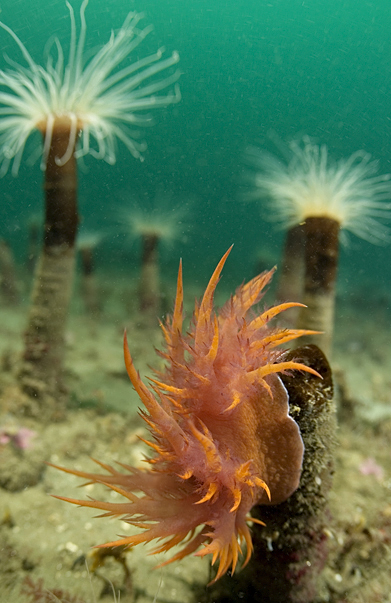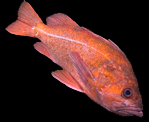
The Barge
A few hundred feet off the breakwater wall lies the wreck of a wooden-hulled vessel known to the local dive community as "The Barge". The history of this wreck is somewhat enigmatic, but it's been suggested that a number of charred timbers are evidence that the craft sank due to a fire. As recently as a few years ago, the wreck was mostly intact. However, time, winter storms, and even some poorly placed anchors appear to have caught up with the wreck. Significant portions are now dust. The bottom around the wreck is silt which often markes the visibility poor. My usual remedy for this is, not surprisingly, to swim very close to the wreck. While doing this on one occasion, an explosion of silt began to billow from, seemingly about my waist. This caused some confusion as I was quite sure I hadn't contacted the wreck, at least not hard enough to create such a mess. A moment later I was staring at an elephant seal cow who'd nonchallantly slid in between me and the wreck on her back!

No, nothing untoward has been done with the color of this tube anemone
(Pachycerianthus fimbriatus). The occasional specimen is actually bright
orange and has something of a phosphorescent glow. Much of this is lost under
strobe lighting -- what you see here is what remains. I don't think blackeye
gobies (Coryphopterus nicholsi) have any special affinity for tube
anemones, but both are often found at the boundary between reef and sand.
"The Barge", Monterey Bay, California
June 17, 2006

A sunflower star (Pycnopodia helianthoides) slides a few arms between a
pair of tube anemones (Pachycerianthus fimbriatus). This is a good
example of how a photographer can intentionally mislead his audience. In this
case the image leads one to believe that the Pycnopodia is stuck or, at
least, thwarted in its attempt to travel toward the camera. Deceptions like this
are one of the reasons I prefer still photography over video. A more "honest"
depiction of a scene like this might involve the Pycnopodia, a swift
moving, voracious predator, mowing down everything in its path, tube anemones
included. Silt-bottom environments, like the one in which this shot was taken,
present a major photographic challenge. Silt is easily stirred into the water
column from ambient surge or from errant fin strokes. The disturbed particles
often lead to images with excessive backscatter.
"The Barge", Monterey Bay, California
December 18, 2005

Rainbow nudibranchs (Dendronotus iris) feed on tube anemones
(Pachycerianthus fimbriatus). The thing that frustrates me most about
rainbow nudibranchs is that they're almost always in a posture such that their
head is not clearly defined.
"The Barge", Monterey Bay, California
July 4, 2006

Home
